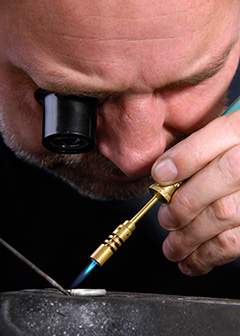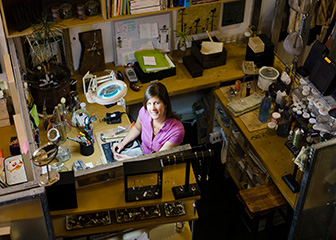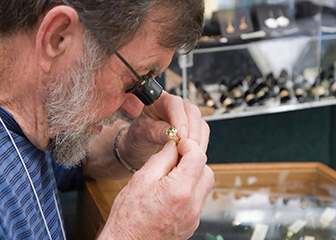Summary
Please enable javascript to play this video.
| Quick Facts: Jewelers and Precious Stone and Metal Workers | |
|---|---|
|
$47,450 per year
$22.81 per hour |
|
| High school diploma or equivalent | |
| None | |
| Long-term on-the-job training | |
| 47,200 | |
| -3% (Decline) | |
| -1,400 | |
What Jewelers and Precious Stone and Metal Workers Do
Jewelers and precious stone and metal workers design, construct, adjust, repair, appraise and sell jewelry.
Work Environment
Jewelers and precious stone and metal workers spend much of their time at a workbench or polishing station, using tools and chemicals.
How to Become a Jeweler or Precious Stone and Metal Worker
Jewelers and precious stone and metal workers typically need a high school diploma to enter the occupation, and they learn the skills of the trade through on-the-job training.
Pay
The median annual wage for jewelers and precious stone and metal workers was $47,450 in May 2023.
Job Outlook
Employment of jewelers and precious stone and metal workers is projected to decline 3 percent from 2022 to 2032.
Despite declining employment, about 6,100 openings for jewelers and precious stone and metal workers are projected each year, on average, over the decade. All of those openings are expected to result from the need to replace workers who transfer to other occupations or exit the labor force, such as to retire.
State & Area Data
Explore resources for employment and wages by state and area for jewelers and precious stone and metal workers.
Similar Occupations
Compare the job duties, education, job growth, and pay of jewelers and precious stone and metal workers with similar occupations.
More Information, Including Links to O*NET
Learn more about jewelers and precious stone and metal workers by visiting additional resources, including O*NET, a source on key characteristics of workers and occupations.
 United States Department of Labor
United States Department of Labor








